The Story of Uncle Sam, the Embodiment of the Fourth of July
On this July 4th, with flags flying, fireworks bursting in air, and backyard picnics, let’s look at one of the most popular avatars of our country.

Artist James Montgomery Flagg’s depiction of Uncle Sam for a 1917 recruitment poster. Image via Library of Congress
I’m a real life nephew of your Uncle Sam,
Born on the Fourth of July.
— “Yankee Doodle Boy,” lyrics by George M. Cohan
On this July Fourth, with flags flying, fireworks bursting in air, and backyard picnics, let’s look at one of the most popular avatars of our country. Symbols of our identity as a nation have been with us since the beginning. Occasionally, as the centuries pass, another one is added. Some are more powerful than others, but most are easily identifiable as belonging to the United States of America: the bald eagle, the Liberty Bell, the Statue of Liberty and, of course, Uncle Sam.
The tall, lanky figure with the white hair and goatee, the red and white striped pants, blue waistcoat, and white top hat with a blue ribbon band of stars has been the embodiment of the United States in some way, shape, or form for over 200 years. But like most legendary figures, there is a real person behind the symbol. In this case, it was a New England-born brickmaker and meat-packer named Samuel Wilson, who lived and worked in Troy, N.Y.
Many modern historians and scholars of American folklore disagree as to whether Sam Wilson was the first and only “Uncle Sam,” and the man upon whom the legend lies. Some say that the references to an Uncle Sam as the personification of the United States go back further than Wilson, although only by a few years, as the United States did not exist until after the Revolutionary War. Whether or not the name was conceived by anonymous soldiers or sailors, or was inspired by Sam Wilson, there is no doubt that the name came about during the second war between the fledgling United States and Great Britain, the War of 1812.

Sam Wilson was born in 1766 in Menotomy (now Arlington) in Massachusetts, a son of Edward and Lucy Wilson. The family moved to Mason, New Hampshire when he was a boy. During the American Revolution, Wilson joined the Continental Army at the age of 14. He was assigned to mend fences and care for and guard cattle, the main meat source for the army. There he also learned to slaughter and package meat.
After the war was over, Sam, now 22, and his 27-year old brother walked from New Hampshire to Troy, a distance of more than 150 miles. Troy, located on the Hudson River just north of Albany, was a growing river town just beginning to make its mark as a hub of commerce and trade. The Wilson brothers were among the first settlers there.
They wasted no time and purchased land on Troy’s Mount Ida, on high ground overlooking the town and the Hudson. They discovered that their property’s soil contained the perfect materials used in making clay bricks. They established a business manufacturing and selling their bricks, the first to be manufactured in Troy. Many of the city’s oldest buildings are built with Wilson bricks. Builders were happy to get locally sourced building materials, as most bricks were imported from the Netherlands, most likely through contacts to Troy’s many Dutch founding families.
The Wilson brothers were not satisfied with just bricks. In 1793 Samuel and Ebeneezer leased another parcel of land, this one on nearby Ferry Street, near the river. Drawing on Sam’s experience in slaughterhouse work and meat-packing, the brothers established E & S Wilson, a meat-packing business. They built a dock on the Hudson for shipping and receiving, which enabled them to further prosper.
Sam left his sweetheart back in New Hampshire, and now a successful businessman, he returned there to marry Betsey Mann. The couple came back to Troy and raised four children, three boys and a girl. In 1808 Sam took a village job as Office Assessor and several days later accepted the position of Path Master, which today would be called Commissioner of Roads. He was known in town as an honest and reliable man, a true patriot and popular with both children and adults. They began to call him Uncle Sam and soon most of Troy knew him as their congenial “Uncle.”
Sam Wilson probably would have disappeared into history as a footnote noting he was one of Troy’s early business entrepreneurs in two of Troy’s early businesses, except for the War of 1812.

The United States declared war on England that year, a war that lasted for two years and saw combat on both land and sea. At stake were American national pride and maritime rights as well as the expansion of American territory to the north and west. America now had a Secretary of War, and his call went out to contractors to supply meat and other foodstuffs to the U.S. Army and Navy.
Elbert Anderson, a New York City wholesale contractor, advertised throughout New York and New Jersey for companies that could supply goods for the armed forces in those two states. The Wilson brothers won one of the contracts, charged with supplying 2,000 barrels of pork and 3,000 barrels of beef for a year. Since they had their pier on the Hudson, they were strategically located for receiving livestock and shipping the barrels of preserved and packed meat.
In addition to supplying the meat, Wilson was appointed meat inspector for the Army. It was his job to check freshness and to make sure packing was done properly in barrels that were built to Army specifications. Once inspected, the barrels were stamped EA-US which stood for Elbert Anderson – United States.

Most of these provisions were sent to an Army camp a few miles away in nearby Greenbush. Many of the 6,000 soldiers there were local boys who knew Sam Wilson and his business. When they saw the labels, they told their mates that the U.S. was for Uncle Sam. A local newspaper picked up on the nickname and a legend was born. By the end of the war, anything stamped with “U.S.” was said to belong to Uncle Sam. The name became synonymous with the United States and remains so to this day.
Sam Wilson and his family lived in Troy for the rest of his life. The “Uncle Sam” moniker stuck and no doubt helped his business succeed. He died in 1854 at the age of 88. The Wilson family lived in a large clapboard-clad house at what is now 144 Ferry Street in Troy. After his death, Betsey continued to live there until her death in 1863. Wilson was still alive as photography became more prolific, so we have his portrait, as well as a photograph of his home, which faced Ferry Street and once had a porch in front.
“Uncle Sam” became the unofficial name for the U.S. government. “I have to pay my taxes to Uncle Sam,” and similar uses of the name resound to this day. But how did we get the physical embodiment of Uncle Sam? He looks nothing like the actual Sam Wilson. We can thank Thomas Nast, the late 19th century’s most influential cartoonist. He’s most famous for giving us our modern day Santa Claus, but our interpretation of Uncle Sam was also his creation.
Other earlier illustrations of Uncle Sam preceded Nast, who drew elements from them to create the Uncle Sam he drew for the cover of Harper’s Weekly magazine published on June 29, 1872. For the first time we get the tall, lean older man with long hair and a goatee, wearing a tailcoat, striped pants, boots, and a top hat. He’d never get to wear anything else after that.

Uncle Sam always had a strong connection to the armed forces. In 1917 artist James Montgomery Flagg gave us the ultimate Sam in the famous recruitment poster “I Want YOU for U.S. Army.” Flagg put on a top hat, a blue tailcoat and a fake goatee and drew himself as the stern and authoritative symbol of the nation. There has been no other credible Uncle Sam since. His image has been copied, embellished upon and caricatured for the last 107 years. Ironically, no one remembers Flagg at all, even though he’s there, in every Uncle Sam.
Monuments to Uncle Sam can be found in several places that claim Sam Wilson. The two with the most standing are in Arlington in Massachusetts, where a bronze memorial statue stands in the center of town. Across the street from it is a commemorative plaque marking Wilson’s birthplace. It is, of course, Uncle Sam Plaza. The other is his childhood home in Mason, New Hampshire, which today is a house museum. Other patriotic depictions of Uncle Sam are spread across the country.
Back in New York, Uncle Sam was hailed as a son of Troy. Over the years, he’s been everywhere in the city. His grave, along with his wife’s and immediate family members, was moved from the older Mt. Ida Cemetery to the much larger Oakwood Park cemetery. There they rest surrounded by some of Troy’s historic families. Their graves are simple and unremarkable, so various civic and patriotic organizations have donated larger monuments and benches that flank the site, with a tall flagpole and American flag. It’s the cemetery’s most popular attraction.
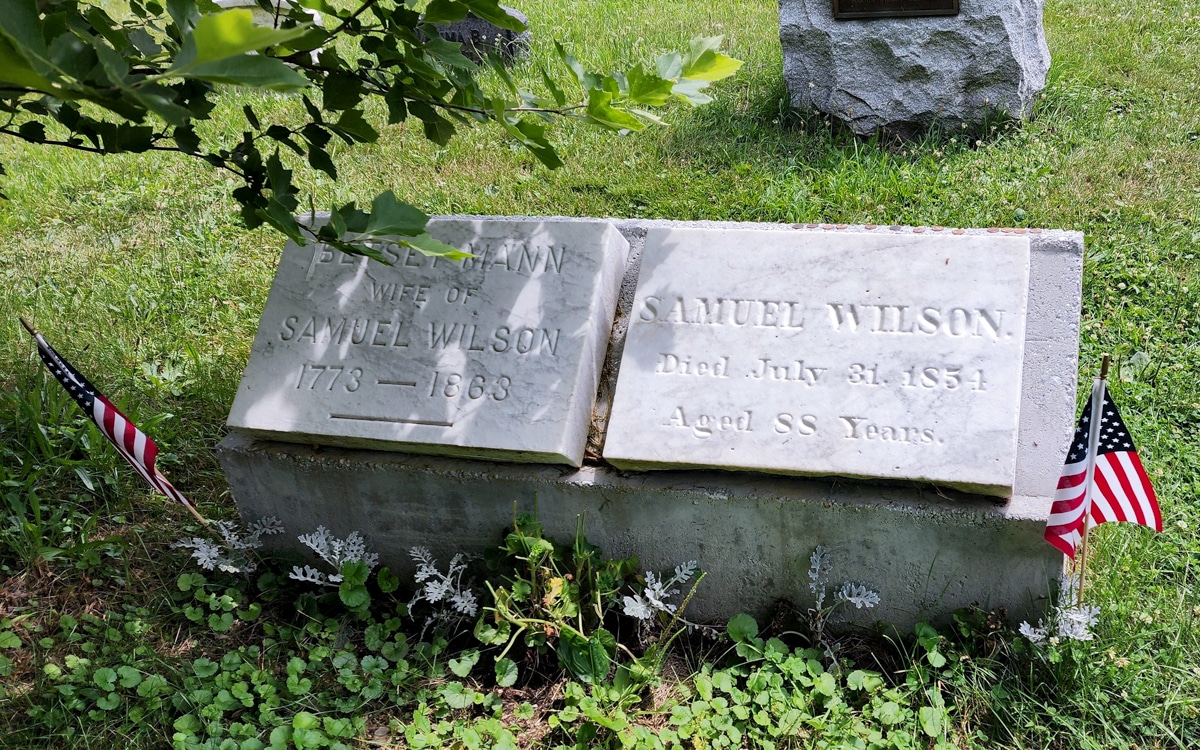
In 1961, the 87th Congress adopted a resolution naming Samuel Wilson of Troy as the progenitor of America’s Uncle Sam. The city’s been banking on Uncle Sam ever since. The local Hart-Cluett Museum has a permanent Uncle Sam exhibit featuring historic objects relating to Wilson, as well as memorabilia of the iconic figure. A large statue of Uncle Sam, crafted in aluminum, stands next to the Uncle Sam bus stop downtown. The statue depicts him as the icon, not the historic man. It is across the street from where the Uncle Sam parking garage stood until recently, and only a few blocks from the Uncle Sam Bowling Lanes.
An exhibit featuring local artists’ embellished Uncle Sam statues was a very popular attraction for downtown businesses several years ago. Whenever there is a street fair or parade in town, there is always someone dressed as James Montgomery Flagg’s Uncle Sam, striped red and white pants, top hat, goatee, and all.
Yet, back in the state-funded-highway-crazed 1970s, the city lost its most tangible memorial to Sam Wilson. An ill-advised plan to run a highway through the center of Troy caused the destruction of an entire vibrant neighborhood of homes, businesses, and other buildings. Sam Wilson’s house, where he and his family lived for years and where he started the business that made him famous, was right in the path and was torn down. If it was that important, it could have been moved. To add insult to injury, after the wide path was cleared, the plans were scrapped and the highway was never built.

It took decades to rebuild on the land, which now totally lacks its historic cityscape. All those families lost their homes for nothing, and Uncle Sam’s home is gone. The site of the Wilson house was never built on, and now is commemorated by two plaques showing what we lost in front of a large empty field of grass. Joni Mitchell, a contemporary of those years, said it best, “You don’t know what you’ve got ‘till it’s gone.”
So, this Fourth of July, if you watch a parade that features a seven-foot-tall, stilt-walking Uncle Sam, or see his image sternly pointing to a sale at a store near you or, better, walking alongside a veteran’s group in a patriotic parade, remember that there was a real Uncle Sam. He helped feed America’s soldiers during wartime and was transformed into the personification of the United States of America. As our nation’s avatar, he fed hungry children during war and he stood for social justice and for all that remains good in our nation. Uncle Sam still needs YOU to continue that work.
Happy Fourth of July from Troy, N.Y.!
Related Stories
- The Brief Moment When George Washington’s Mount Vernon Graced Prospect Park
- Decorator William Payne and His Collection of Colonial-Era Lefferts Houses
- Our Beautiful Brooklyn Blocks
Email tips@brownstoner.com with further comments, questions or tips. Follow Brownstoner on X and Instagram, and like us on Facebook.

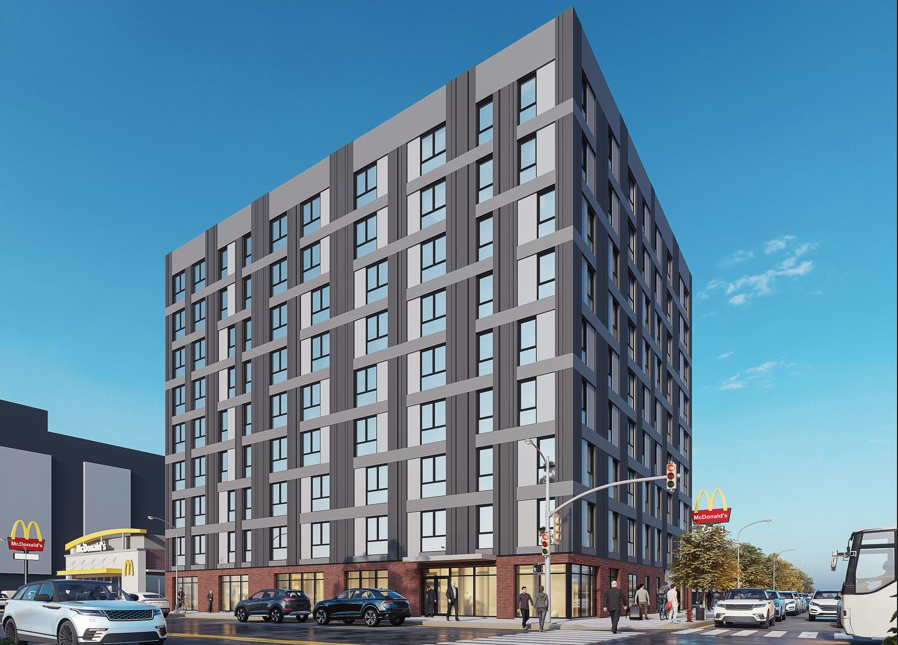
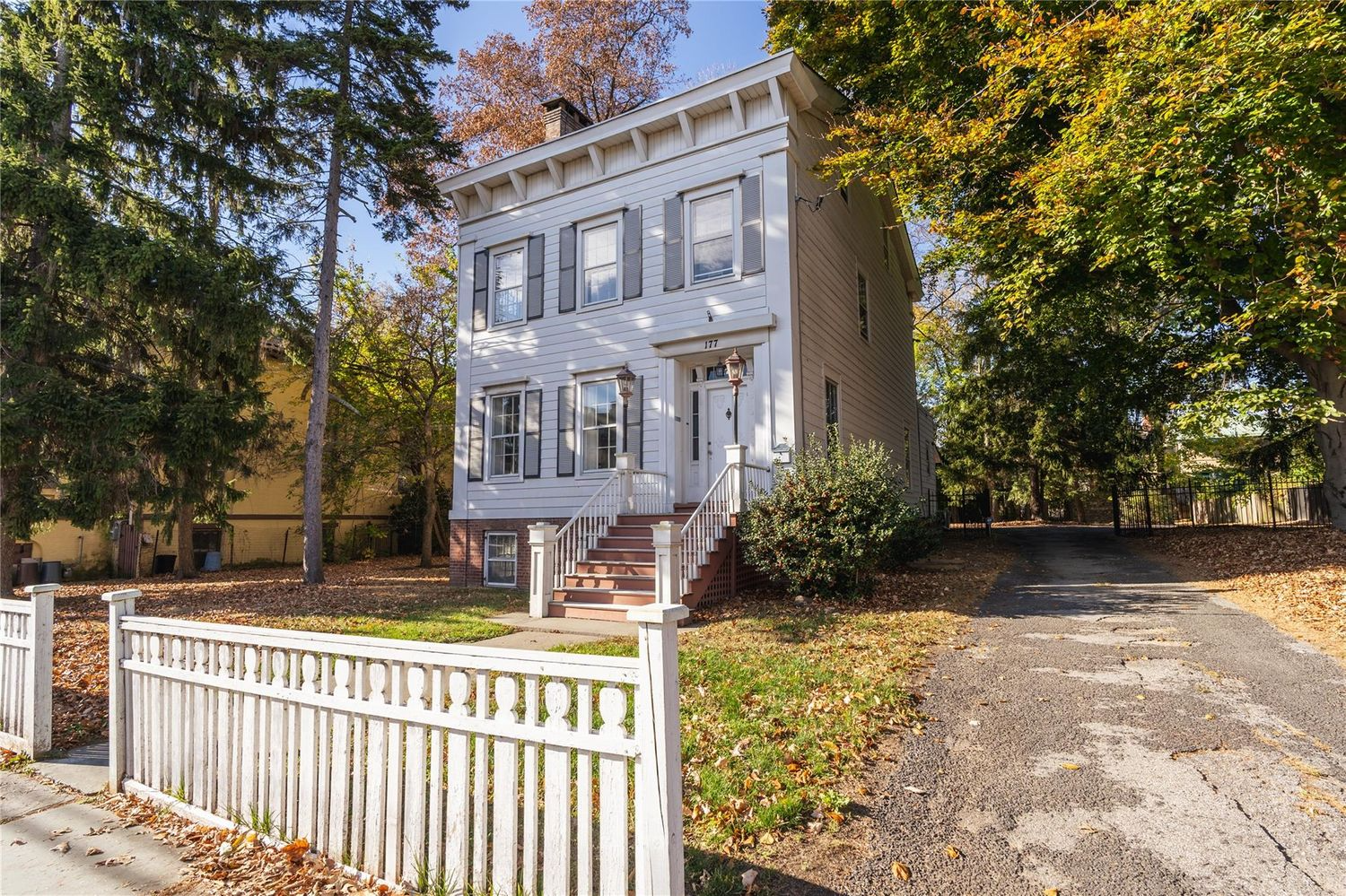


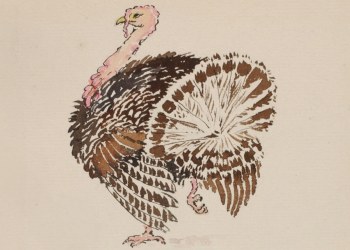
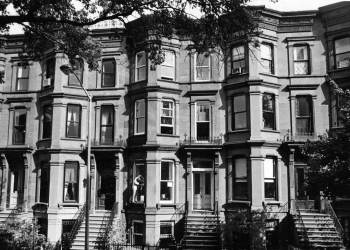
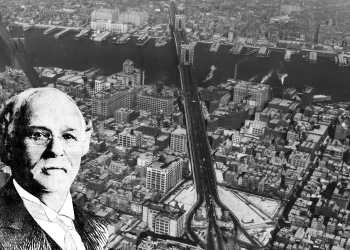
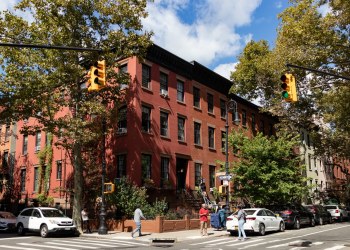
What's Your Take? Leave a Comment